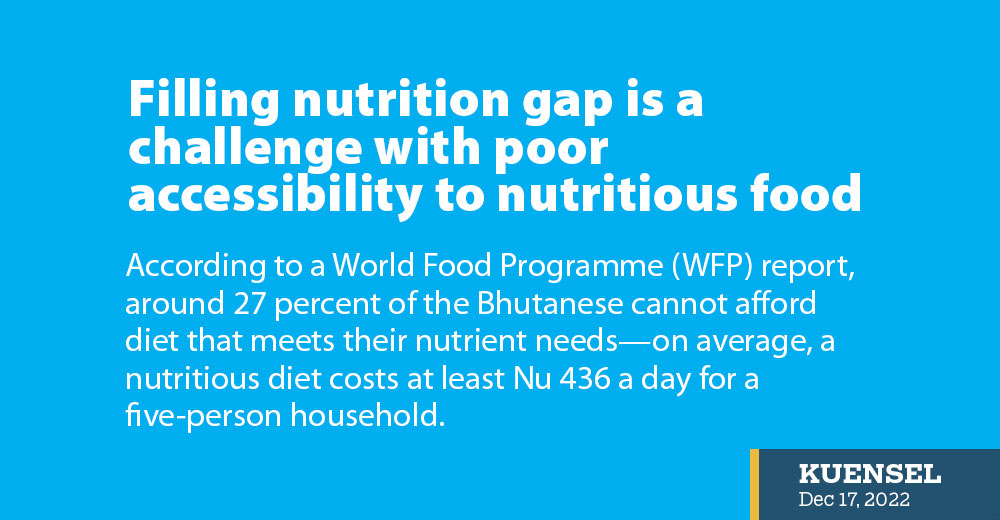Chhimi Dema
According to a World Food Programme (WFP) report, around 27 percent of the Bhutanese cannot afford diet that meets their nutrient needs—on average, a nutritious diet costs at least Nu 436 a day for a five-person household.
The report states that while energy-dense staples such as rice are cheap and plentiful, nutritious foods such as vegetables, fruit and animal-source foods are out of reach for many.
Poor dietary quality and overconsumption of staple food such as rice are key drivers of malnutrition in Bhutan, it states.
Fill the Nutrient Gap is a multi-sectoral stakeholder engagement and analytical process characterising the obstacles that households face in accessing and consuming nutritious diet and prioritising activities to overcome them.
Health Minister Dechen Wangmo said that affordability and accessibility to nutritious food and habit of eating lesser nutritious food are among the challenges in meeting the required nutrient in the country.
She said that rice, which is 75 percent of the food on Bhutanese plates, is not a nutrient-rich food.
“We eat enough caloric content food, but not nutritious food. We need to rethink our plate and eat diverse foods,” she said.
The report states that current dietary patterns, which include high consumption of starchy staples and processed foods high in sugar and sodium, push nutritious diets faurther out of reach and increase the risk of being overweight.
The country’s food systems “characterised by small landholdings, low productivity and market inefficiencies remain vulnerable to external shocks,” it states. It adds that the pandemic and global food crisis have exposed the vulnerability of the food system and threaten to reverse the progress that has been made in improving nutrition outcomes.
Health Minister said that when the population continues to have deficient nutrient status it affects physical and cognitive development of a child.
She said that micro-nutrition deficiency and nutritional gaps are critical and every sector needs to address them collectively.
WFP’s representative and country director, Carrier Morrison, said that this nutrient gap assessment looks at the barriers for families accessing food, the availability and affordability, and the cost of a nutritious diet.
She said that these assessments inform what the country needs to do programme and policy-wise to be able to deliver a nutritious diet to everyone.
The report made recommendations such as introducing multiple micronutrient supplements, enhancing social behaviour change strategies, utilising schools to establish healthy habits early in life through nutrition education and provision of diverse and healthy school meals and investing in rice fortification infrastructure, among others.
This is the first Fill the Nutrient Gap report in the country.
The report was launched yesterday in Thimphu.


